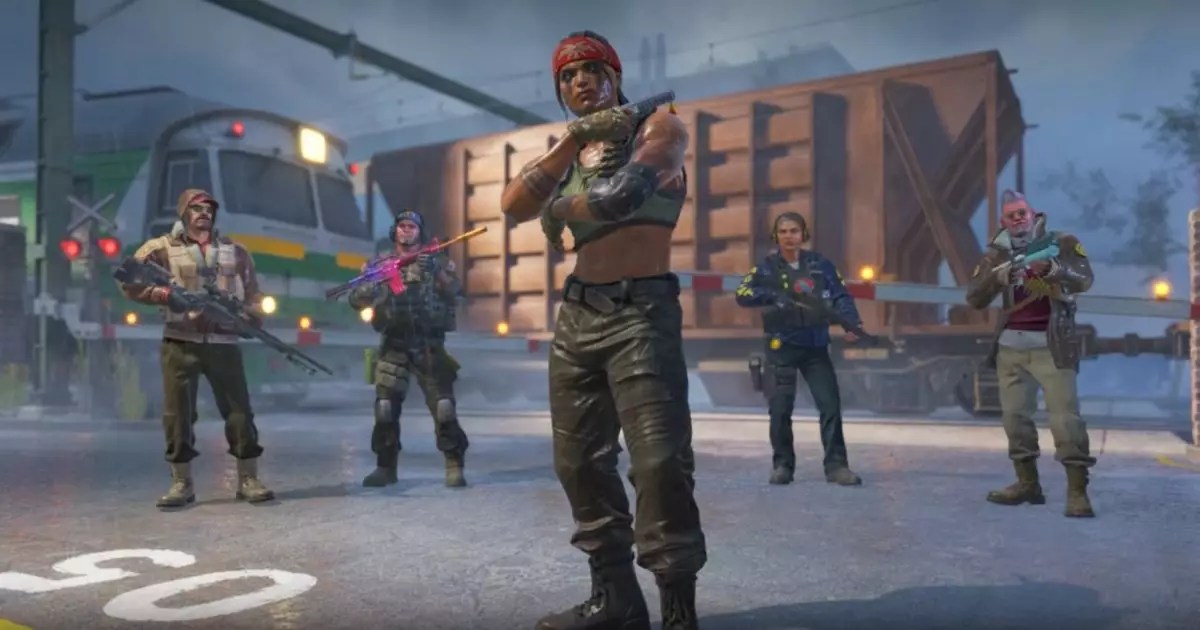The map Train has long been a staple in the Counter-Strike series, renowned for its distinctive layout and tactical gameplay. With the transition to Counter-Strike 2, Valve has taken significant steps to refresh this aging arena. The updates introduce both visual enhancements and structural modifications, shedding light on a previously overlooked battlefield. This overhaul not only revitalizes the visual appeal of Train but also redefines how players approach the map, reshaping the tactics players have long relied upon.
A Visual Transformation
One of the most striking changes is the map’s aesthetic overhaul. Train now boasts a much gloomier atmosphere, described as “60% cloudier,” which inherently alters the mood of the gameplay. The addition of rain, complete with puddles that mirror surroundings and graffiti-strewn train cars, breathes life into the environment. These changes provide a stark contrast to the original Train’s relatively plain and bright ambiance. The incorporation of visible wear and tear, such as rust and cracked concrete, gives the impression of a map that has seen its share of battles, further immersing players in a vibrant, albeit grim, backdrop.
Historically, Train catered primarily to a sniper’s style of play, with long sightlines that encouraged “AWP” tactics. However, Valve’s updates aim to introduce more variety to encounters by widening these sightlines. This alteration invites a more balanced exchange of fire, allowing for diverse playstyles to come to the forefront. By creating openings for mid-range gunfights and flanking maneuvers, Valve enhances the tactical landscape of Train, encouraging players to strategize rather than rely solely on sharpshooting.
Despite the notable enhancements, the community remains divided on whether Train is ready for a competitive setting. Many players have voiced concerns regarding spawn locations that may favor one team over another, potentially leading to unbalanced matches. This feedback highlights the ongoing challenge Valve faces in refining the map to meet competitive standards. Adapting the new visuals and layout to ensure fairness and equitable gameplay will be paramount as the community continues to assess Train’s viability in tournaments.
Beyond Train: Additional Updates and Community Contributions
In addition to Train, Valve has made subtle adjustments to other maps like Overpass, a response to community feedback that reflects an ongoing dialogue between developers and players. Moreover, the introduction of four new community maps—Basalt, Edin, Palais, and Whistle—demonstrates a commitment to diversifying gameplay options within Counter-Strike 2. This willingness to incorporate player-generated content hints at a bright future for the franchise, one that embraces innovation alongside tradition.
Train’s revamp in Counter-Strike 2 marks a pivotal moment for both the map and the game as a whole. With its transformed visuals and revised tactical elements, Train invites players to reexamine their strategies and engage with the environment in novel ways. As the community weighs in on these changes, the hope is that Valve can fine-tune the experience to deliver a balanced and immersive environment that respects the legacy of this beloved map while setting the stage for memorable new encounters.


Leave a Reply